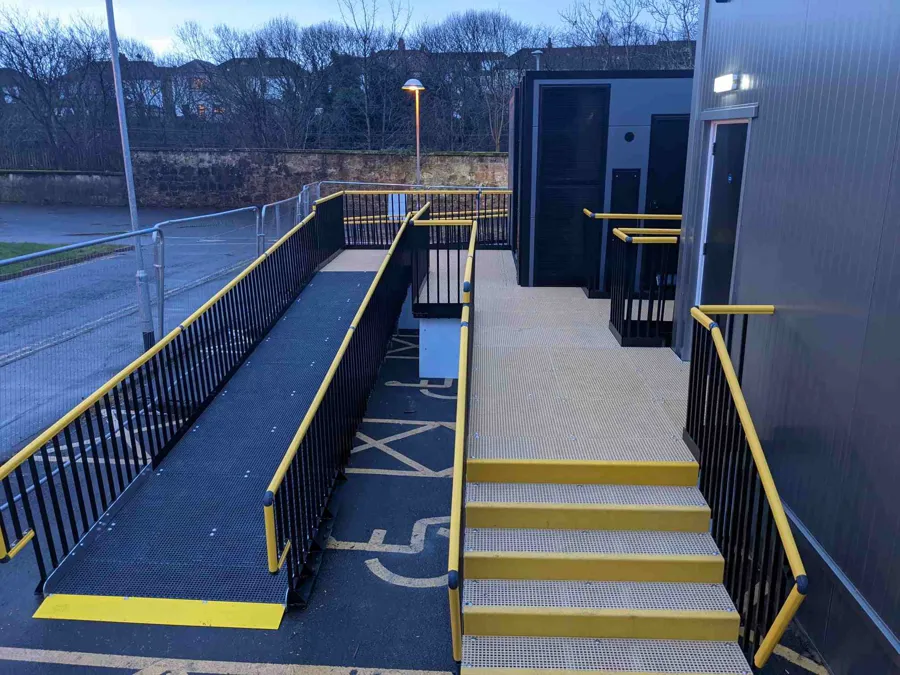
You are visiting the Canada Kee Safety website from United States. Would you like to go to the United States site?
Public works covers a wide range of facilities and infrastructure that help provide vital services to a municipality’s people. Although there is overlap with the private sector—for example, public and private schools—public works is a guarantee that basic needs are met.
Education is a fundamental requirement, as is healthcare, power supply, and water and wastewater treatment. The public sector is also responsible for extensive transportation infrastructure, such as roads, bridges, airports, railways, utility pipelines, canals, and shipping ports.
And because “All work and no play makes Jack a dull boy,” public spaces, notably parks, playgrounds, and beaches also fall under public works.
Such vast interaction of public facilities and spaces with the populace, private employers, and visitors requires that municipal officials ensure the safety of their buildings, transportation base, and recreational venues. This huge, multi-faceted responsibility can be addressed partly by addressing access, barriers, and fall protection.

What are the needs and risks of accessing a facility? What areas need to be cordoned off from unauthorized personnel? Is proper signage and lighting in place? Are there uneven or slippery surfaces that need to be addressed? Are there loose safety railings in stairwells, balconies, and other areas?
Where will employers be working at height, and what fall protection systems will they need to perform their tasks safely? Will workers be near other fall hazards, such as machinery, railroad tracks, and bodies of water?
A proactive approach to hazard assessment allows for the implementation of specific mitigation practices.

Stairs and walkways to access buildings and other areas should have smooth handrail systems so pedestrians can maintain a consistent grip as they move their hands along the railing. Access by ramps is also required for schools, hospitals, and municipal buildings to meet national and local standards for people in wheelchairs or using walkers and canes.
Modular railings and ramp systems are easy to install and can be reconfigured to meet changing needs. They can be constructed of aluminum or galvanized steel for strength, durability, and corrosion resistance and powder-coated for high visibility and enhanced aesthetics.

While there should be no barriers to accessing a facility, guardrails are necessary in hazardous places throughout the premises. The clarifier tanks at a water/wastewater treatment plant are a prime example of where extensive safety railing systems should be installed. Railings on bridges, rail platforms, canal locks, and beachfront boardwalks are other outdoor areas where guardrails are needed.
Railings should be installed indoors on stairs and where handicap grab rails are required to navigate a building. In power plants and other heavy work areas, guardrails around machinery and loading docks help separate people from hazards. A self-closing gate allows authorized access to these work areas.
Modular, pipe-fitted metal railings are installed without welding, drilling, threading, or tapping. Lightweight aluminum railings are often used in municipal buildings and parks for their architectural appeal. Heavy-duty galvanized steel railings frequently go behind the scenes in maintenance areas to provide a safety barrier and fall protection. Both styles are strong, durable, and corrosion-resistant. Safety gates incorporated into the guardrail system can also be made of aluminum or galvanized steel.

Maintenance and repair operations are an essential function of municipal workers. A modular work access platform contributes to worker safety and productivity for work-at-height tasks, such as on rail cars, airplanes, and larger machinery. They feature anti-slip nylon or aluminum treads for steps and platform flooring. Metal frames support them and include safety railings. Types of work platforms include:

Schools, hospitals, and other flat-roofed facilities often have building services equipment on the rooftop. This equipment must be inspected regularly to minimize downtime and repairs. The roof edge is an obvious fall hazard for these workers, and a “collective” fall protection system is the best way to protect them.
A perimeter roof guardrail is a collective system that safeguards multiple workers without the need to wear personal protective equipment—such as a harness and lifeline—or to provide extensive training on the inspection and use of the equipment.
However, rooftops can be slippery and cluttered with obstacles. A roof walkway with anti-slip treads allows workers to traverse the roof safely. The walkway can also be equipped with guardrails for added protection.
A public works safety program that entails hazard assessment, safe access, guardrails and barrier systems—from the ground floor to the roof—and anti-slip platforms and walkways provides a proactive and comprehensive approach to fall protection for public buildings and spaces.
Municipal managers and other authorities that implement such policies and install compliant fall protection systems and equipment will provide a safe environment for their employees with accessibility and enjoyment of public spaces for everyone.

Most importantly, public places are, by definition, for everyone. Whatever its specific purpose or structure, safety and accessibility must be considered for the spaces to be truly public.